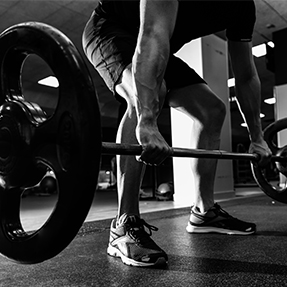
For ultimate fitness, focus on eccentric training
Whenever you do weight lifting or strength training, it can be broken down into three portions: concentric, isometric, and eccentric movements. To understand what each means, remember that the portion called concentric occurs when muscles contract; the isometric portion is when the muscle is not moving at all; and the eccentric portion is when the muscle lengthens.
However, of the three moves, the one that likely gets overlooked and probably done incorrectly, is the eccentric movement. There are important benefits you can gain when doing the eccentric movement of a strength training move correctly that’s critical to your long-term health.
Here’s a brief look explaining what each move entails:
- Concentric movement: A concentric move occurs when tension in the muscle increases and muscle fibers shorten or contract. A good example of a concentric movement is a biceps curl of bringing a dumbbell from your hip up to your shoulders. As you bring the weight up close to the shoulder, your biceps muscle shortens creating increased tension. Another example is pushing your body to the top when doing a push-up.
- Isometric movement: An isometric move happens when you hold completely still which includes no shortening or lengthening of a muscle. Using the bicep curl example again, this time you curl your biceps to 90 degrees and then you stop and hold that position with the weight for ten seconds. When performing any movement where you hold a position completely still, is considered isometric. High planks, a wall sit, or hanging from a pull-up bar are each considered isometric moves.
- Eccentric movement: The eccentric movement involves lengthening your muscle fibers or returning the weight you lifted back to its starting position. Again, using the biceps curl example, when you lower your weight back to hip level as slowly as possible, is considered an eccentric move. Other examples of eccentric moves include lowering yourself from a pull-up bar very slowly or slowly rolling back from a Pilates roll-up.
Why eccentric strength is vital to your health and well-being
All of us know of someone who was in relatively good health but then falls, breaking a hip, yet is unable to recover fully. Within a year or two, the person’s health and quality of life goes downhill quickly.
One of the leading causes of death in developed countries is accidental deaths. Falls and other types of accidents are difficult to anticipate but you can take steps to minimize their occurrence, and to make the accident less severe if and when they happen. One of the best moves you can do is to focus on eccentric moves.
Since eccentric movement was defined earlier in this article, it’s important to understand that this move is considered more challenging as it attempts to slow the speed or cadence of an eccentric move. By doing this move very slowly, it trains your muscles to act more like shock absorbers by braking against gravity helping to prevent falls and injuries. For example, if you are hiking going down a steep hill, you want good eccentric strength of your knees allowing you to maintain control preventing you from falling forward and tumbling down. The same thing can be said when going down a flight of stairs. Another good example of eccentric movement/strength is being able to lower a child from your arms to the floor or sitting down in a chair without collapsing. A key component of muscular control is the ability to lengthen your muscles when under tension.
So, eccentric strength helps you not only avoid injuries but also supports strong explosive movements when playing soccer, sprinting, basketball, and volleyball. In addition, eccentric moves can strengthen the body’s connective tissue to improve if rehabbing for aches and pains.
How to work on eccentric strength
To boost your eccentric strength, it takes a concerted effort to focus on this move. Here are three simple, yet very effective moves to excel your eccentric strength:
- Push-ups: Begin in a high plank and slowly lower by bending your elbows to a count of three to five seconds as you lower yourself to the floor. Once you’ve reached the floor, once again, begin in a high plank and repeat.
- Squats: Stand with feet slightly wider than hip width apart. Raise your arms parallel to the floor as you slowly sink down to a count of five. Once you are lowered into a squat, return by standing back up at a regular pace. Repeat.
- Overhead Press: Stand with feet hip-width apart and use either dumbbells or kettlebells held at shoulder height. Lift the weights above your head at a regular pace, then slowly lower the weights down to a count of five. Repeat.
Dr. David Samadi is the Director of Men’s Health and Urologic Oncology at St. Francis Hospital in Long Island. He’s a renowned and highly successful board certified Urologic Oncologist Expert and Robotic Surgeon in New York City, regarded as one of the leading prostate surgeons in the U.S., with a vast expertise in prostate cancer treatment and Robotic-Assisted Laparoscopic Prostatectomy. Dr. Samadi is a medical contributor to NewsMax TV and is also the author of The Ultimate MANual, Dr. Samadi’s Guide to Men’s Health and Wellness, available online both on Amazon and Barnes & Noble. Visit Dr. Samadi’s websites at robotic oncology and prostate cancer 911.
